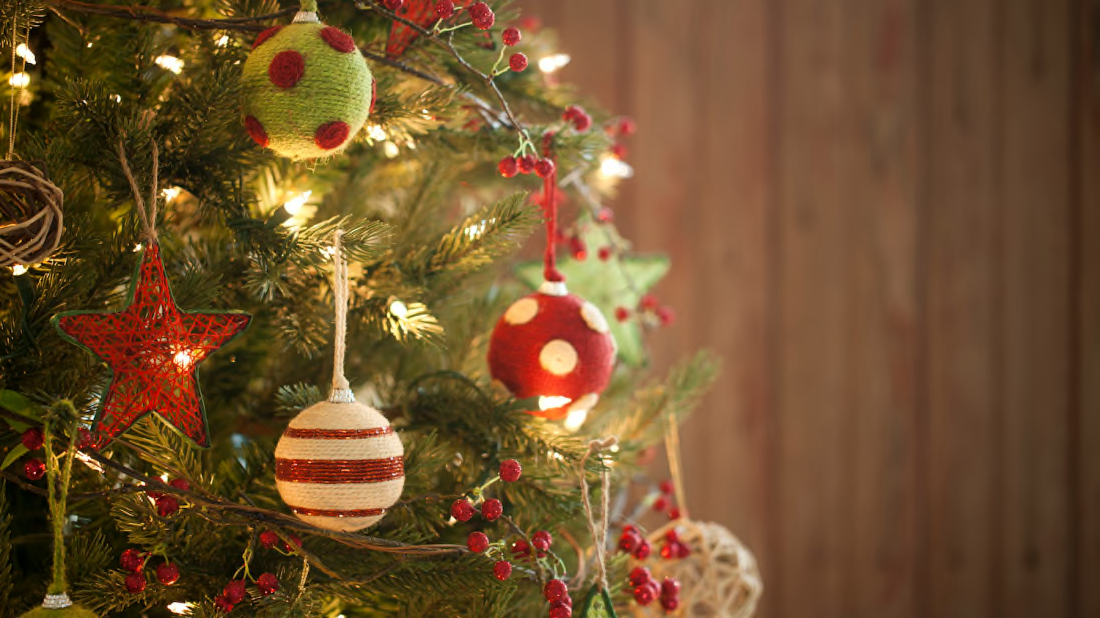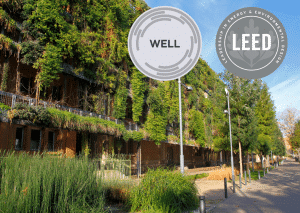Every year there is a raging debate as to whether people should buy artificial or real Christmas trees, if they want to be as environmentally green as possible. There are pros and cons to both. Even as environmental impact research accumulates more data, the question of “real or fake” is still not answered with absolute certainty. The reason is that “going green” depends on human behavior and not just on the type of tree.
Oh, the scent of the pine tree!
The first thing most people say when they insist on buying a real Christmas tree is that they enjoy the scent of the pine tree. Though pine scent is available in a can now, it is just not the same. The good news is that families wanting a real tree can enjoy the scent today without feeling guilty about the environmental impact.
People were once free to cut down wild trees on federal lands. The commercials and movies showing families trudging through the snow to find the ideal Christmas tree are outdated for the majority of tree hunters today. The U.S. Forest Service has strict regulations about the number, size, and location of trees that can be cut. You may be able to find a choose-and-cut tree farm that grows trees for the sole purpose of letting people enjoy the experience of finding and cutting a Christmas tree. It certainly adds a personal touch to the experience.
Most people buy their real tree at a Christmas tree lot. The vast majority of trees sold in lots are grown on farms as a crop and are not cut down in other areas. There is no loss of wildlife habitat and no damage to the environment from people tromping through delicate forests. In fact, the tree crops are replanted, and while growing, serve as natural habitat for wildlife. It takes an average of 7-10 years to grow a 6-7 foot tree, so the birds and squirrels have a home for nearly a decade and other wildlife has shelter.
The real Christmas tree is biodegradable, recyclable as mulch or in other ways, carbon-neutral at the time of cutting, and can be grown on land that is not suitable for growing other types of crops. Moreover, approximately 93 percent of Christmas trees are recycled today. Many Christmas tree farms are also owned by local farmers, so buying one of their trees supports the local economy.
The types of trees grown do produce oxygen, though not as much as leafy trees. Since it takes a decade to grow a tree, and trees are replanted, there is a constant supply of oxygen produced. The National Ag Statistics Service estimates one acre of Christmas trees consumes approximately 500 pounds of carbon dioxide annually and produces 1,000 pounds of oxygen. Earth911 says a single Christmas tree grown on a farm can consume 1 ton of CO2 over its lifetime. There is an environmental impact from the fossil fuels used to cut and transport the trees. Nonetheless, the real tree is host to, dust, mold, and fungi that ends up released indoors, contributing to allergies.
According to the Carbon Trust, it is important to not send the Christmas tree to a landfill because a rotting tree produces methane gas, which is 25 times more potent than CO2. Carbon Trust research found that a 6.5-foot tree in a landfill has a carbon footprint of 16kg (35.2 pounds) of CO2. If it is run through a wood chipper or burned, it has a much lower carbon footprint of 3.5kg of CO2. There are approximately 30 million real trees sold each year, and fortunately, there are more than 4,000 local Christmas tree recycling programs.
What a Fake!
For years the claim was made that the artificial tree is better for the environment. Wait a minute! Is it really? WAP Sustainability Consulting says the environmental impact of fake trees is less than the impact of real trees, if the artificial tree is used for a minimum of five years. The company compared the two types of trees on the basis of energy and water use, and greenhouse emissions.
Not everyone agrees with WAP Sustainability Consulting. The reality is that artificial trees are made from plastic, usually PVC, and metal, like steel. PVC is made from carbon intensive oil. Many artificial trees are manufactured overseas and shipped around the world, adding to the consumption of fossil fuels.
The Carbon Trust says the 6.5-foot artificial Christmas tree has a carbon footprint of approximately 40kg. The carbon footprint is twice that of a real tree that goes to a landfill. It means you need to own the fake tree for about 12 years to make it more environmentally sustainable than a real Christmas tree that is burned.
The manufacturing of the artificial tree accounts for approximately two-thirds of the carbon footprint. A fourth of the carbon footprint comes from the industrial emissions.
Shifting Industry
The bottom line is that the eco-friendliness of the real versus artificial tree is subject to many factors. It depends on things like how the tree reaches the point-of-sale, how many years the artificial tree is used, and what happens to the tree after Christmas. Based on the carbon footprint criteria alone, the real tree is the best choice, but there are so many other factors involved, like human behavior.
The Christmas tree industry as a whole is shifting. The federal Census of Agriculture data indicates real Christmas tree production has fallen 30 percent in the U.S. from 2002 to 2017. Some of it is due to the aging population. It is easier to put up and store an artificial tree than to shop, set up, and dispose of a real tree. The trend might reverse because millennials seem to want the small eco-footprint of the live tree and want to buy local.
Bird’s Eye View
There are eco-friendly options for people buying and disposing of Christmas trees.
Buying
- Buy a potted Christmas tree to plant outside after the holidays
- Buy locally grown real trees to minimize emissions from transporting the trees
- Buy a used artificial tree at the thrift store
- Get creative and make a Christmas tree out of recycled cardboard, Velcro on a wall in the shape of a tree (let your kids decorate it), or crafting materials
- Decorate a houseplant instead of a tree
Disposing
- Recycle the real tree when ready for disposal by taking it to a recycle center
- Donate a real tree to a park or environmental group to use at the bottom of lakes, to make hiking paths, or prevent erosion
- Cut up a real tree and use in home landscaping
- Put a real tree through a chipping machine or burn it
- Use the artificial tree for at least 10 years and even longer (some last 20 years)
- Find unique ways to use the components in the fake tree when time to discard it, i.e. turning the boughs of an artificial tree into wreaths or using components for arts and crafts
- Donate the artificial tree to a nonprofit, school, or secondhand store to extend its life cycle
- If all plastic, see if a local recycling center will take the artificial tree
The best advice is to consider how much you care about being eco-friendly. Either type of tree has environmental sustainability qualities dependent on how you treat the tree when the holidays are over.










